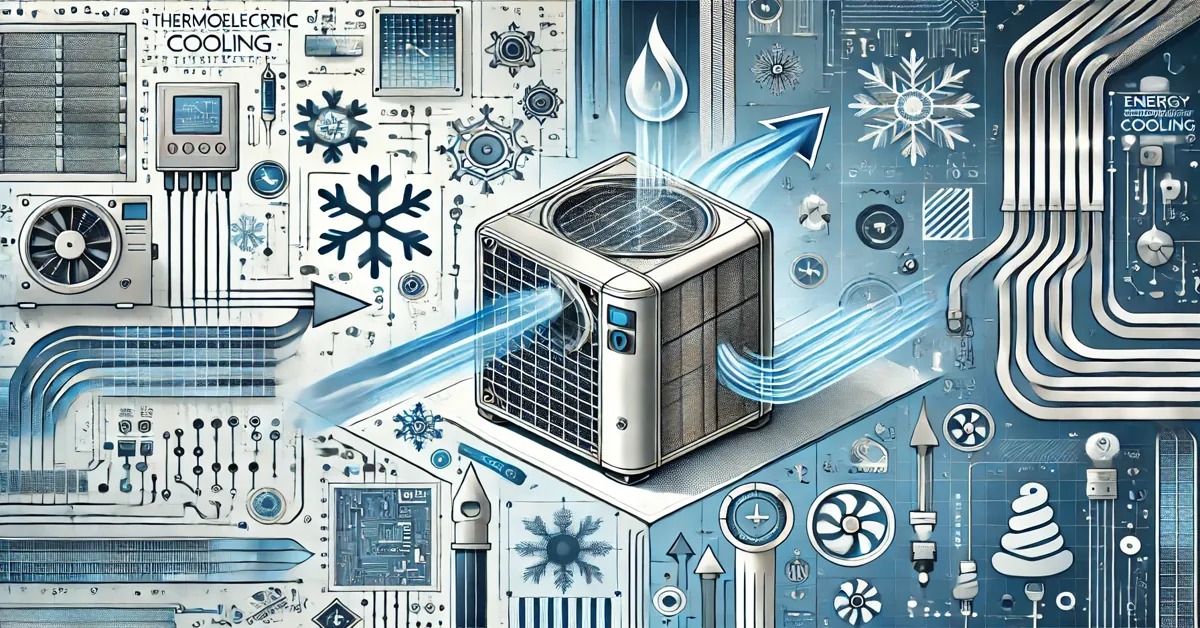Introduction
In today’s world, where energy efficiency and environmental sustainability are at the forefront of technological advancements, innovative cooling solutions have become increasingly critical. Thermoelectric coolers (TECs) are emerging as a groundbreaking technology that offers highly efficient and eco-friendly cooling alternatives. This article delves into the workings of TECs, their varied applications, and their undeniable advantages over traditional cooling methods.
How Thermoelectric Coolers Work
The fundamental principle behind a thermoelectric cooler is the Peltier effect. When electrical current flows through a circuit consisting of two different types of conductors, heat is absorbed at one junction and released at another. This process creates a temperature gradient that can be harnessed for cooling purposes. Unlike conventional cooling systems that rely on refrigerants and mechanical compressors, TECs utilize solid-state technology, making them more durable and requiring less maintenance.
The Peltier effect allows TECs to achieve precise temperature control, which makes them ideal for applications where temperature stability is crucial. By converting electrical energy directly into a temperature difference, TECs operate efficiently and quietly. The absence of moving parts also contributes to their longevity and reliability, significantly reducing the risk of mechanical failure. Additionally, the solid-state nature of TECs allows for integration into various devices and systems, from small-scale consumer electronics to sizeable industrial cooling solutions.
Some provide a comprehensive description of this process. TECs’ straightforward yet effective working principle makes them attractive for various applications, offering a sustainable and low-maintenance alternative to traditional cooling technologies.
Critical Applications of Thermoelectric Coolers
Thermoelectric coolers (TECs) are highly versatile devices, widely used across various fields due to their compact size, efficiency, and precise temperature control. They are particularly valuable in medical science, where stable temperatures are essential for preserving biological samples, organs, and other sensitive materials. TECs are also instrumental in storing temperature-sensitive medications and vaccines, ensuring their efficacy until use. Their ability to maintain consistent temperatures over extended periods is especially beneficial in remote or underserved areas with limited access to traditional refrigeration.
TECs play a vital role in managing the heat generated by high-performance components such as CPUs, GPUs, and other sensitive electronic parts in consumer electronics. By effectively dissipating heat, TECs help maintain optimal operating conditions and enhance the longevity of these devices. For instance, high-end gaming PCs and servers often require constant cooling to prevent thermal throttling and ensure sustained performance during demanding tasks. Using TECs in these contexts allows for more compact and efficient designs without compromising performance.
Industries also employ TECs for precision cooling in laser systems, scientific instruments, and other advanced technological applications. The ability of TECs to operate in varying environmental conditions ensures the reliability and performance of these systems. Whether in scientific research laboratories or cutting-edge manufacturing facilities, the precise temperature control provided by TECs is invaluable. This technology helps maintain the stability and accuracy of sensitive instruments and contributes to the efficiency and productivity of industrial processes.
Advantages of Thermoelectric Coolers
The numerous benefits of thermoelectric coolers make them preferable to traditional cooling methods. One of the most significant advantages is energy efficiency. TECs directly convert electrical energy into cooling, leading to reduced energy consumption. This efficiency is particularly valuable in applications with limited energy resources, or conservation is a priority. Furthermore, the absence of mechanical parts eliminates the energy losses usually associated with moving components, making TECs a more sustainable choice for long-term use.
Another noteworthy benefit is the durability of TECs, owing to the absence of moving parts. This design minimizes wear and tear, reduces maintenance needs, and extends the cooling system’s lifespan. Unlike traditional cooling systems requiring periodic servicing and part replacements, TECs can operate for extended periods with minimal intervention. Their compact and lightweight nature makes them suitable for applications where space is premium. This compactness allows for easier integration into various systems, ranging from small household appliances to complex industrial machinery.
TECs have a lower environmental impact as they do not use harmful refrigerants. Traditional cooling methods often involve substances with high global warming potential (GWP), whereas TECs use electrical currents, presenting a greener alternative. This environmental benefit is significant as the world shifts towards more sustainable practices. Additionally, the noise level in TECs is significantly lower due to the lack of moving mechanical parts, enhancing the user experience in noise-sensitive environments such as quiet home offices, laboratories, or hospital settings. This silent operation ensures that TECs can be used in various contexts without causing disturbance.
Conclusion
Thermoelectric coolers represent a significant advancement in cooling technology. Their ability to provide energy-efficient, reliable, and eco-friendly cooling solutions positions them as a transformative force in various industries. From medical sciences and consumer electronics to industrial applications, the versatility and efficiency of TECs make them a preferred choice. As we move towards more sustainable and energy-conscious practices, thermoelectric coolers will undoubtedly become even more prominent, making them an indispensable component of modern cooling solutions.
Continuous innovation in materials science and technology will likely further enhance the performance and applicability of TECs, opening up new opportunities for their use. As more industries recognize the benefits of thermoelectric cooling, the adoption of TECs is poised to grow, contributing to a greener and more efficient future. Embracing this advanced technology will help achieve environmental sustainability goals and pave the way for more reliable and sophisticated cooling solutions across various sectors.








